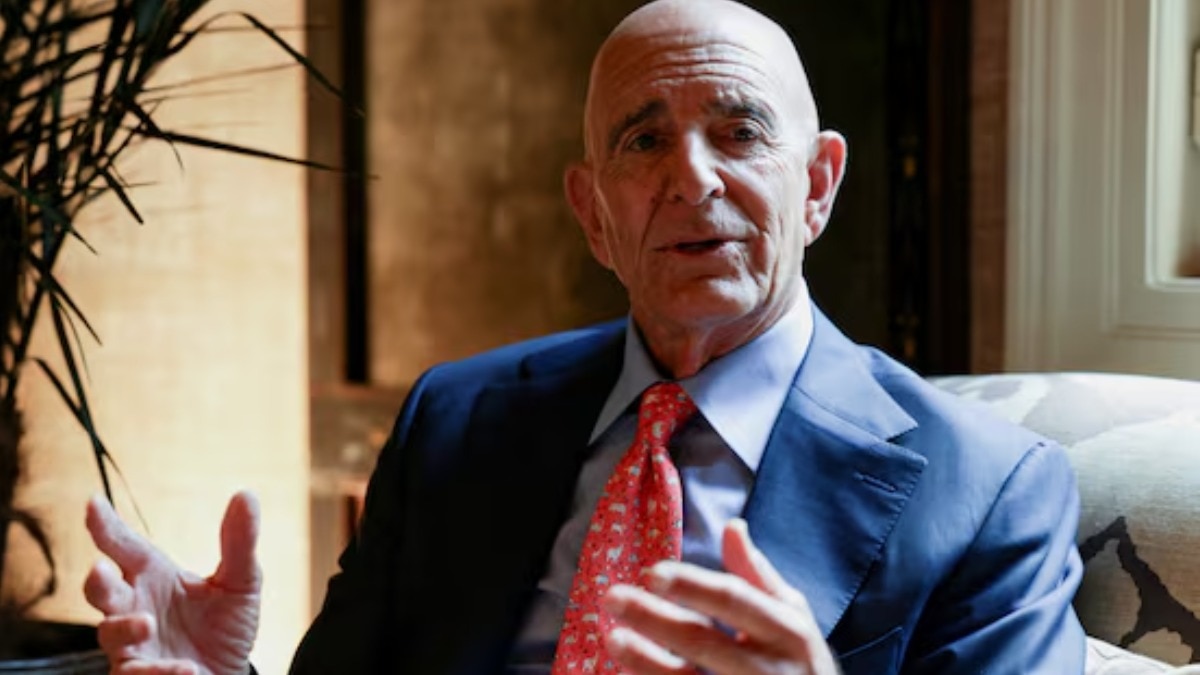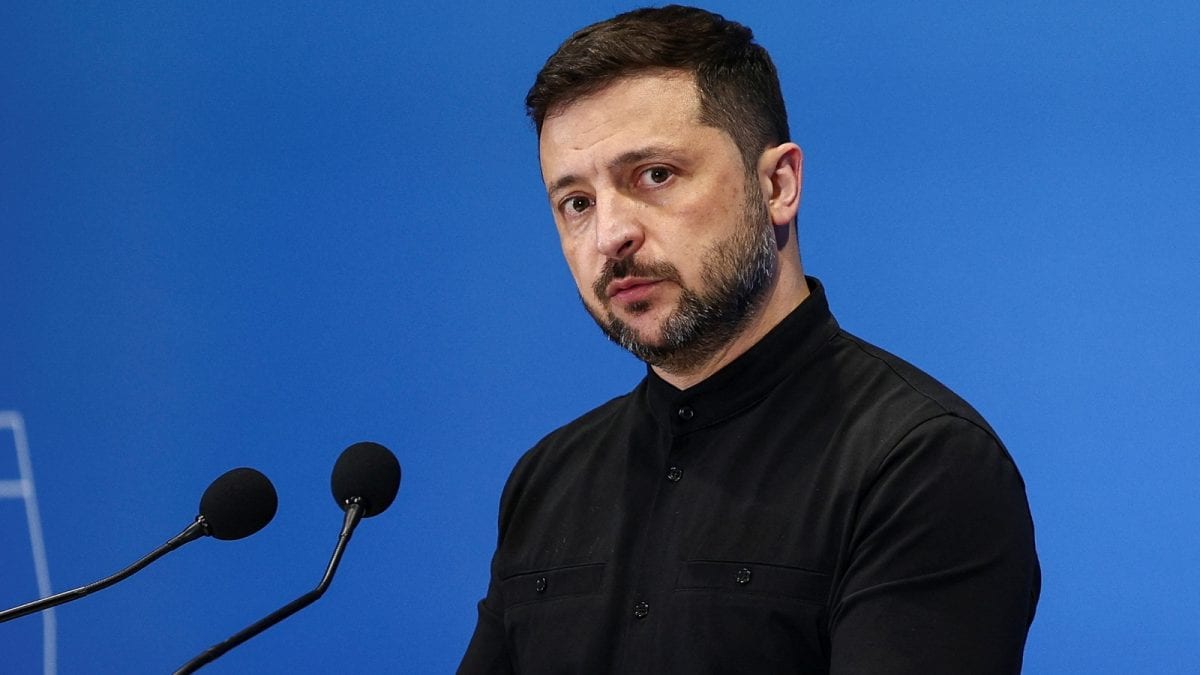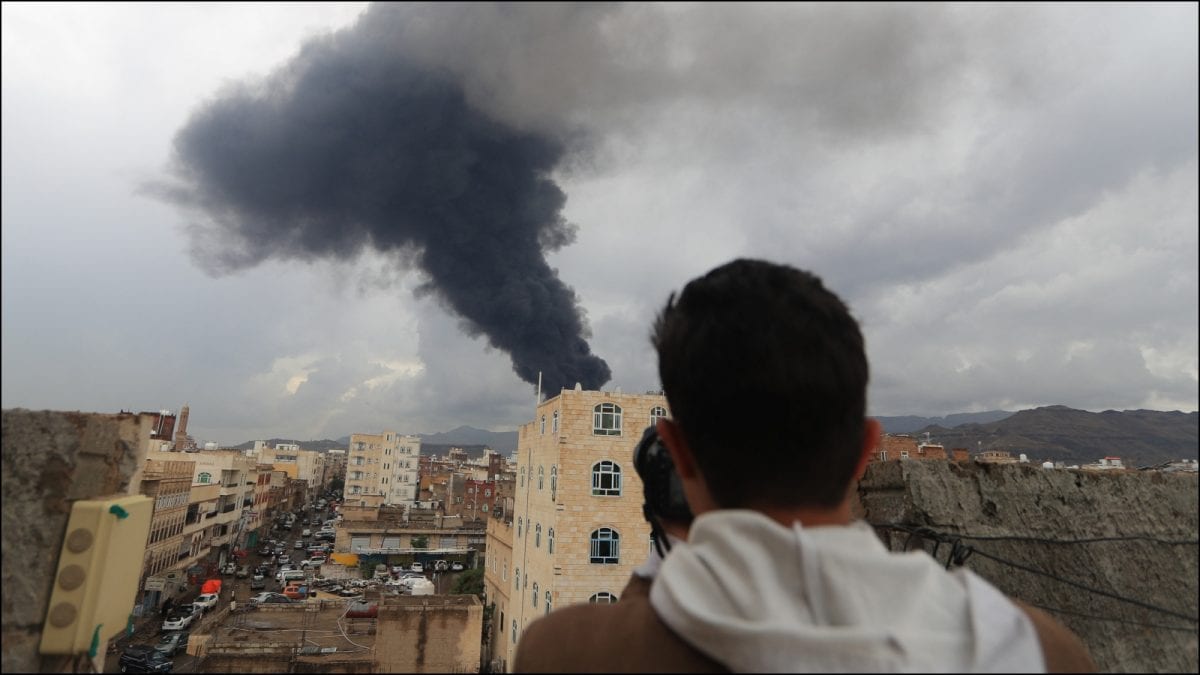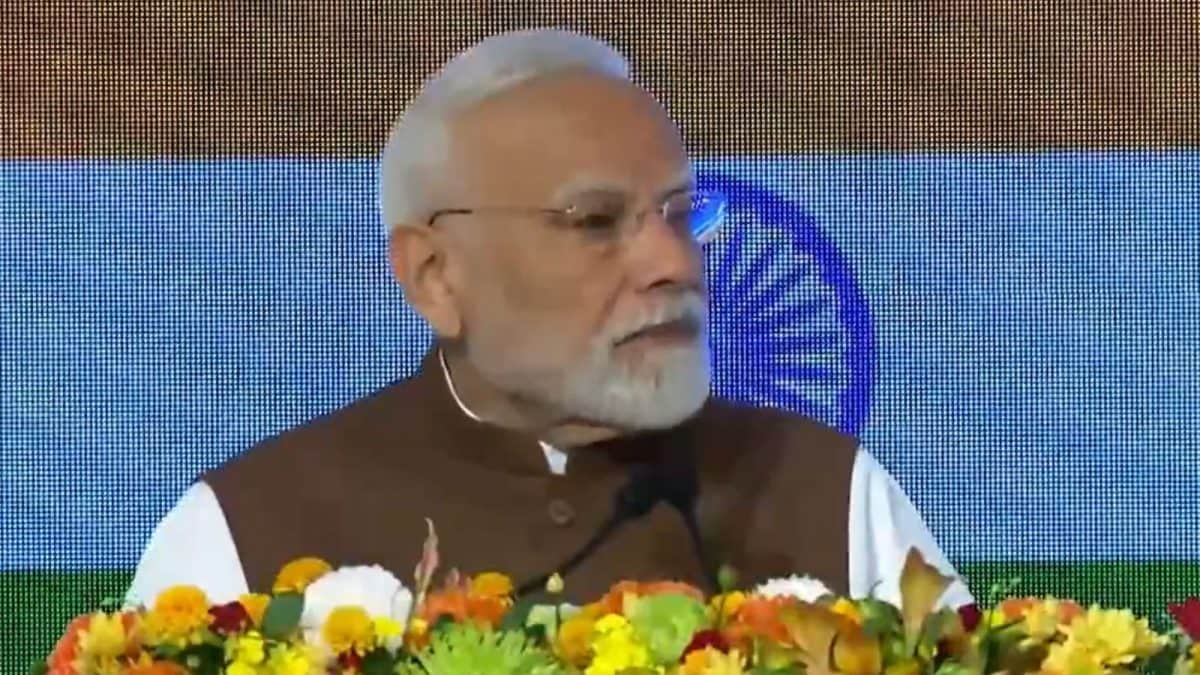Last Updated:August 03, 2025, 12:51 IST
Gaza's hunger crisis explained: What happens when humans get no food? Why is starvation or malnutrition worse for kids? “We basically eat our body for nutrition,” says expert

Palestinian children collect food aid at a makeshift tent camp in Deir al-Balah, central Gaza Strip. (AP File)
In what may be termed as the huge cost of the Israel-Gaza war are the deaths from starvation and malnutrition-related conditions. Gaza’s 2.1 million residents have been subjected to relentless bombardment and mass displacement — many forced to flee multiple times, some even as many as 10 times since the conflict began.
This instability, coupled with blocked aid, has created conditions of extreme hunger.
How children became the casualty of Hamas-Israel war
Hamas triggered the war when militants stormed into southern Israel on October 7, 2023, killing around 1,200 people and taking 251 others hostage. Fifty hostages remain in Gaza, but fewer than half are thought to be alive. Israel’s military offensive has killed more than 59,000 Palestinians, according to Gaza’s Health Ministry. The ministry is part of the Hamas government, but the U.N. and other international organisations see it as the most reliable source of data on casualties.
Israel enforced a complete blockade on food and other supplies for 2½ months beginning in March. It said its objective was to increase pressure on Hamas to release dozens of hostages it has held since its attack on Israel on October 7, 2023.
Why is the aid not really helping Gazans?
Though the flow of aid resumed in May, it is drip fed and is a fraction of what aid organisations say is needed. Aid deliveries have often fallen far below the daily minimum needed to sustain the population—at times dipping to just 10-20 trucks a day, compared to the pre-war average of 500. The result is a humanitarian system that delivers just enough to avoid total collapse, but not enough to prevent widespread hunger, disease, and death.
How do Gazans get aid? Why many die even while getting food? Why is there malnutrition despite aid?
Most of the food supplies Israel has allowed into Gaza go to the Gaza Humanitarian Foundation, an American group backed by Israel. Aid seekers (on foot, by cart, or vehicle) travel up to a designated drop-off point, usually 1.5 km from the distribution site, where they must disembark and proceed on foot carrying supplies. From there, they walk to al Joura—a sandy pit where families wait, often for 12–24 hours, to receive a drone or military “go" signal to move toward the aid point. Once the signal arrives (supposedly indicating safe passage), they proceed roughly another 1 km through lines of Israeli military checkpoints, sniper positions, drones, and barriers to reach the guarded gate of the distribution center. Witnesses have reported fire near or into al Joura—even before the signal is given—endangering crowds gathered for hours hoping for sustenance.
After the signal, thousands of people who have waited for hours (often overnight) in al Joura or nearby dunes begin sprinting toward the distribution gate to ensure they get aid before the supplies run out, often causing stampede. To reach the gate, people must cross 500–1,000 meters of exposed terrain. This area is often surveilled by Israeli drones, surrounded by sniper or observation posts and lined with Israeli army checkpoints or trenches. Despite the “go signal," witnesses say that gunfire frequently breaks out, either to control the crowd or for unclear reasons. Many are killed or injured in the chaos — shot by live rounds, rubber bullets, or drone-fired projectiles; crushed in crowd surges or while trying to flee; trampled if they fall.
Israeli soldiers or GHF staff allow only a small number of people through the final gate. The rest are either turned back or forced to wait again until the next day.
Gaza’s aid-related deaths
According to the United Nations and humanitarian sources, at least 875 people have been killed while trying to access food, water, or medical assistance since late May. The vast majority—over 670 deaths—occurred near Gaza Humanitarian Foundation (GHF) distribution centers, primarily in Rafah and Khan Younis.
Gaza sees a rise in starvation, malnutrition-related deaths
The United Nations World Food Programme has reported that more than one-third of the population has gone for days at a time without food. At least a quarter of Gaza’s people are now experiencing what experts describe as “famine-like conditions." The World Health Organisation has warned that the “worst-case scenario of famine" is no longer a prediction — it has arrived.
Take a look at the numbers: By July 22, 2025, Gaza’s Health Ministry reported 101 deaths due to malnutrition and starvation since October 2023, including 80 children. As of July 30, 2025, Anadolu Agency reported 154 cumulative deaths from starvation—89 were children. Reuters on August 1, 2025 confirmed the figure—156 such deaths, including 90 children.
UNICEF statement on July 24, 2025 highlighted that child malnutrition deaths rose from 52 to 80 in just a few months. On August 2, 2025, reports from WHO indicated 21 deaths of children under five due to malnutrition in 2025 up to mid July.
Moreover, UNICEF estimates that 100,000 women and children are currently suffering from severe malnutrition, while other UN agencies warn that disease is spreading rapidly and health infrastructure has almost completely collapsed.

Case study 1: From dawn to dusk, a Gaza family focuses only on finding food
The AP reported one family’s search for food from dawn to dusk. Every morning, Abeer and Fadi Sobh wake up in their tent in the Gaza Strip to the same question: How will they find food for themselves and their six young children? The couple has three options: Maybe a charity kitchen will be open, and they can get a pot of watery lentils. Or they can try jostling through crowds to get some flour from a passing aid truck. The last resort is begging. If all else fails, they simply don’t eat. It happens more and more these days, as hunger saps their energy, strength and hope.
The predicament of the Sobhs, who live in a seaside refugee camp west of Gaza City after being displaced multiple times, is the same for families throughout the war-ravaged territory.
Aid worker in Gaza says she no longer recognises friends due to hunger
Spokesperson for the UN Agency OCHA which coordinates humanitarian aid in Gaza, Olga Cherevko, told CNN’s Ben Hunte that she has ‘no words’ when she sees her friends in Gaza as they are in such a desperate state.
‘Situation gone from bad to worse’: Paediatric oncologist on starvation in Gaza
Dr. Zeena Salman, a pediatric oncologist and founder of the organization HEAL Palestine, told CNN’s Wolf Blitzer what’s happening in Gaza is “the decimation of a healthcare system".
What happens when human body is deprived of food?
“If you’re not eating enough, we have evolved mechanisms for how to stay alive," Dr. Kevin Stephenson, a malnutrition expert at Washington University in St Louis, US, explained, while speaking to Public Radio (NPR). “We basically eat our own body for nutrition."
This self-consumption unfolds in five overlapping metabolic stages, as the body adapts to survive without external energy sources.
When the human body is deprived of food, it enters a progressive state of energy conservation and physical breakdown. Here’s a timeline of what typically happens, stage by stage:
0-6 hours: Post-meal/ normal state
The body uses glucose from the last meal for energy. Glycogen (stored glucose in liver and muscles) is still available.
60-72 hours: Glycogen depletion and onset of ketosis
Glycogen stores run out in 24–48 hours. The body begins breaking down fat stores into ketones (alternative fuel for brain and muscles). Blood sugar levels start to drop slightly. The person may feel intense hunger, irritability, fatigue, headaches, lightheadedness.
3-7 days: Muscle breakdown begins
The body begins breaking down muscle protein to get amino acids for energy and essential functions (especially to feed the brain and heart). Ketones become the primary fuel source. Muscle wasting, slowed heart rate, and lowered body temperature occur. Mental clarity may fluctuate: some report clarity, others confusion or disorientation. Immune system starts weakening.
7-21 days: Severe starvation
Fat stores become critically low, especially in lean individuals. Severe muscle loss including heart, diaphragm, and other organs. Major symptoms include extreme weakness, loss of coordination, drop in blood pressure and heart rate, difficulty breathing, swelling (edema) from protein deficiency (kwashiorkor-like symptoms). Organ failure risk increases. Cognitive decline: confusion, hallucinations, loss of consciousness.
21-70 days: Fatal starvation.
Death usually occurs from cardiac arrest, infection (due to immune collapse), organ failure, dehydration (if no fluids are consumed).
Estimated death time:
Without food, but with water: 45–70 days
Without food and water: 3-10 days, depending on climate and health
Can you recover from starvation?
Yes, but refeeding must be gradual. Too rapid nutrition reintroduction can cause Refeeding Syndrome, a dangerous shift in fluids and electrolytes that can be fatal.

Specific starvation conditions in children like in Gaza
Children deteriorate much faster under starvation. Their bodies need a steady stream of nutrients for growth, but their energy reserves are small. UNICEF estimates that 12.2 million children worldwide faced severe malnutrition last year, with South Asia being the hardest-hit region. Gaza is now adding dramatically to those figures.
Children, especially under 5, are more vulnerable:
Marasmus: Severe calorie deficiency which leads to emaciation
Kwashiorkor: Protein deficiency leads to edema, skin/hair changes, liver enlargement
Symptoms include:
Sunken eyes, protruding ribs
Thin limbs but swollen belly
Apathy or constant crying
Skin peeling, hair discoloration
Psychological effects
Irritability, apathy, and depression
Impaired concentration and memory
Hallucinations and emotional numbness in extreme stages
With Agency Inputs

At the news desk for 17 years, the story of her life has revolved around finding pun, facts while reporting, on radio, heading a daily newspaper desk, teaching mass media students to now editing special copies ...Read More
At the news desk for 17 years, the story of her life has revolved around finding pun, facts while reporting, on radio, heading a daily newspaper desk, teaching mass media students to now editing special copies ...
Read More
August 03, 2025, 12:46 IST
News explainers Gaza’s Hunger Pain: When The Body Starts To Eat Itself Due To Lack Of Food
Disclaimer: Comments reflect users’ views, not News18’s. Please keep discussions respectful and constructive. Abusive, defamatory, or illegal comments will be removed. News18 may disable any comment at its discretion. By posting, you agree to our Terms of Use and Privacy Policy.
Read More

 3 weeks ago
3 weeks ago












